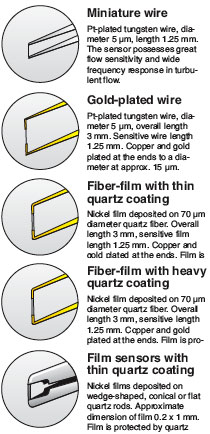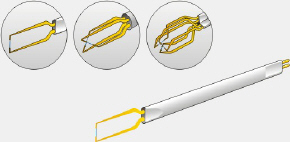Constant Temperature Anemometry (CTA) uses a thin wire placed in the fluid flow to measure changes. CTA is used almost exclusively in turbulent flows, in part because the presence of a probe introduces turbulence, and in part because of the method's ability to measure "fine structures" in the flow. "Fine structures" are the result of rapidly fluctuating flows, micro vortices, supersonic variations, and other phenomena that are often difficult to image with other methods.


 Measurement is accomplished through a wire that is heat by a constantly regulated amperage. Variations in resistance cause the system to react to keep the wire temperature stable, and thus the flow characteristics are measurable. Multiple directions of flow variation can be measured through the use of probe heads with multiple wires.
Measurement is accomplished through a wire that is heat by a constantly regulated amperage. Variations in resistance cause the system to react to keep the wire temperature stable, and thus the flow characteristics are measurable. Multiple directions of flow variation can be measured through the use of probe heads with multiple wires.
Unique advantages of CTA measurement:
- Measures velocities from a few cm/s to supersonic
- High temporal resolution: fluctuations up to several hundred kHz
- High spatial resolution: eddies down to 1 mm or less
- Measures all three velocity components simultaneously
- Provides instantaneous velocity information